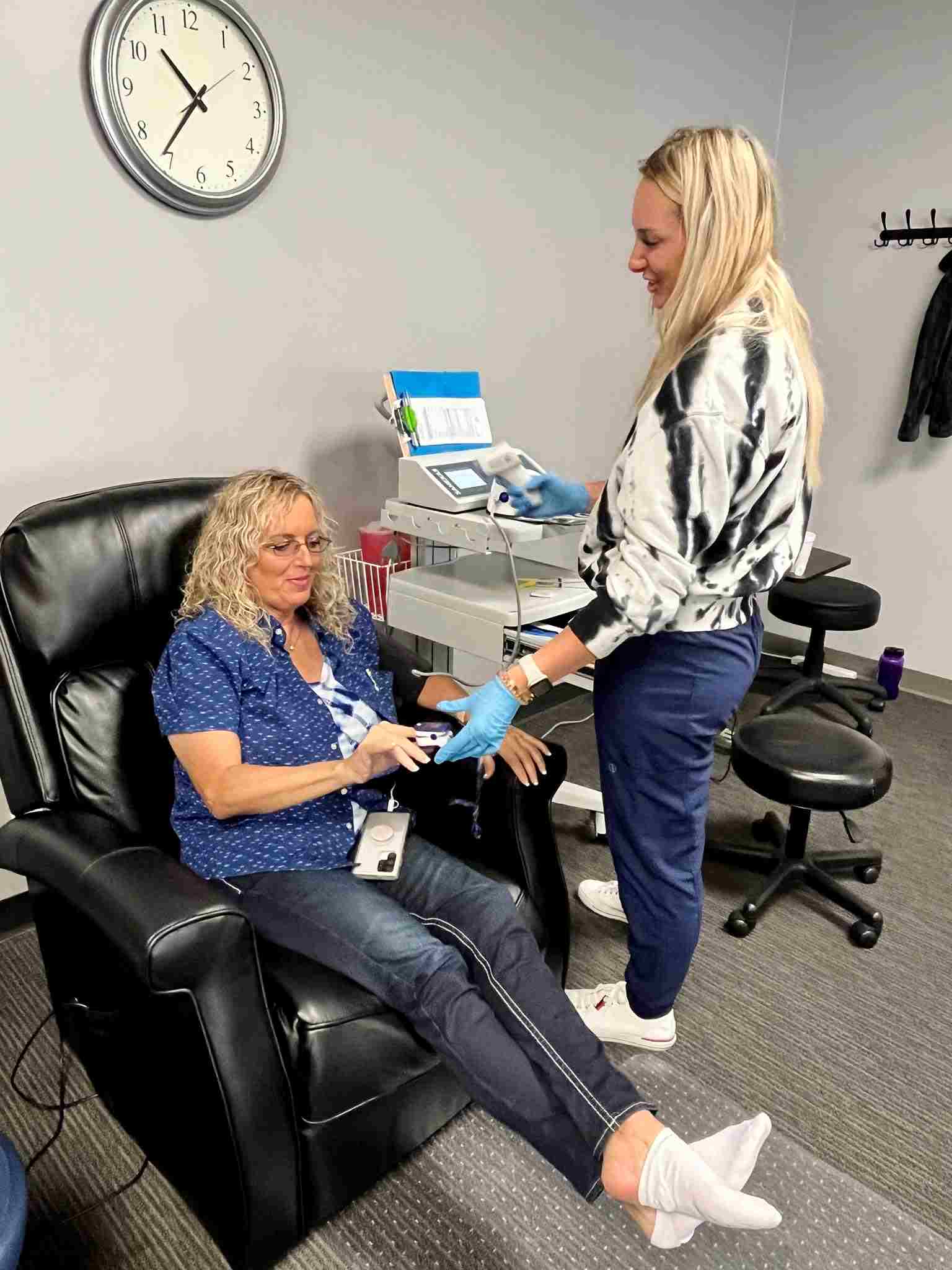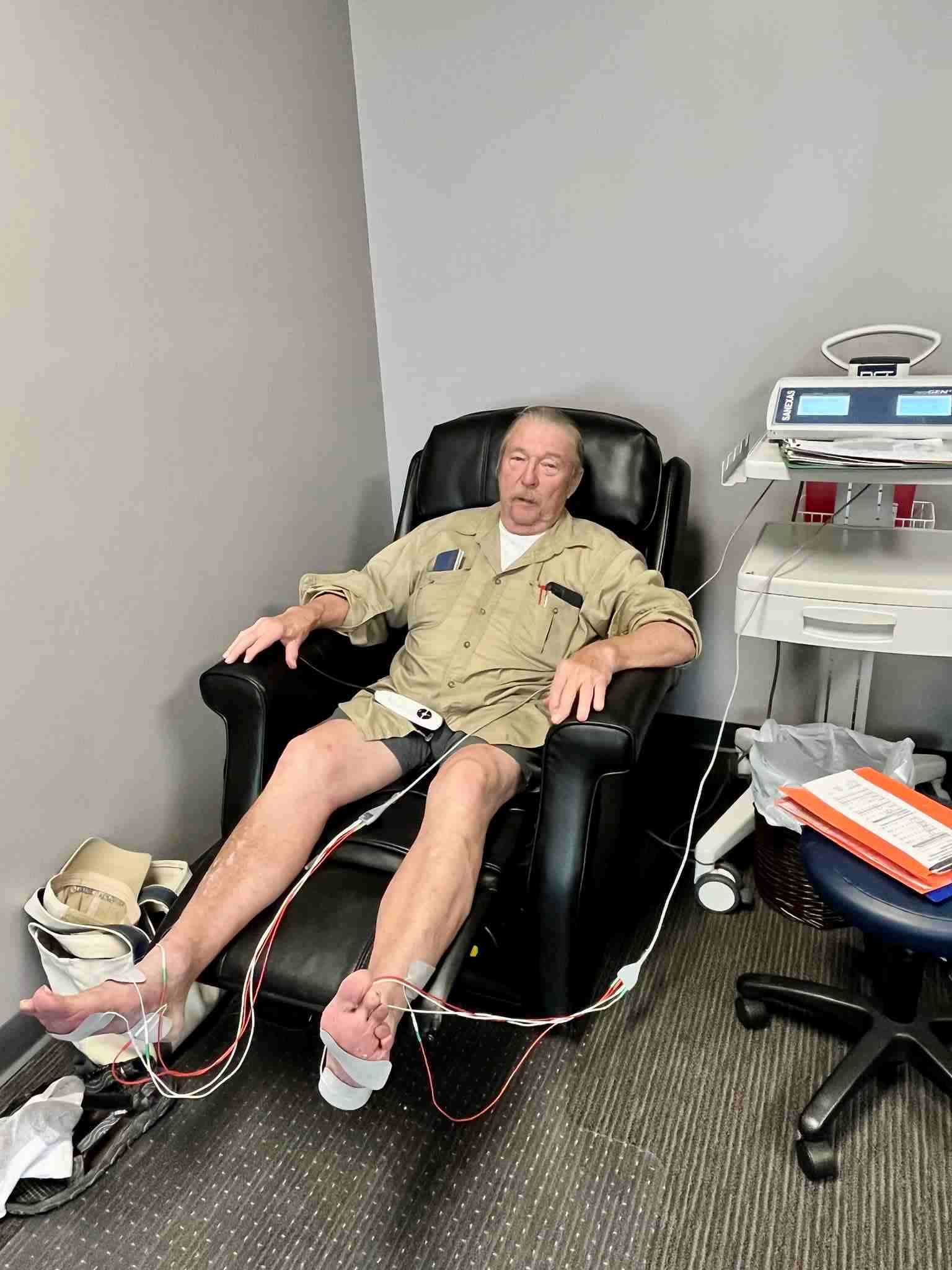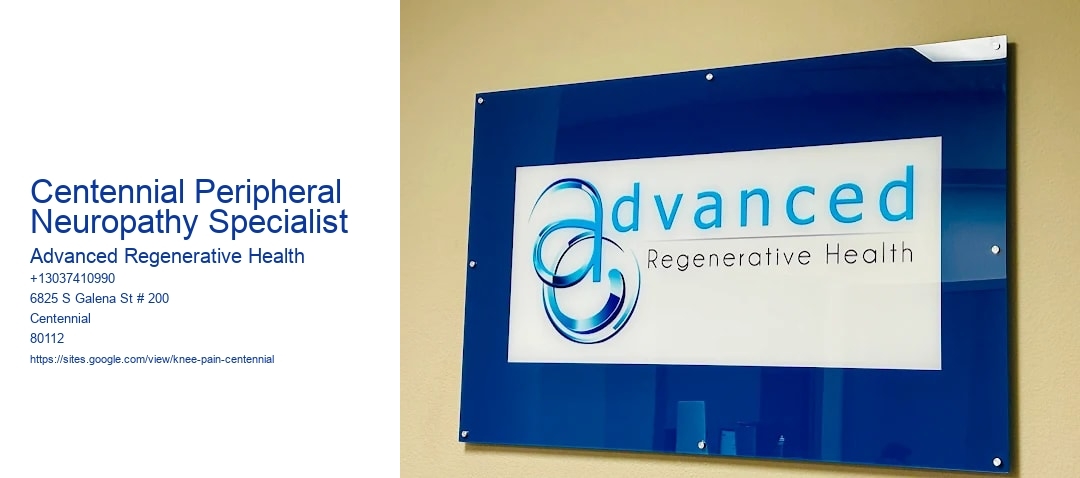Treatment Approaches for Centennial Peripheral Neuropathy
Centennial Peripheral Neuropathy is a condition that affects the peripheral nerves, leading to symptoms such as pain, numbness, tingling, and weakness, primarily in the hands and feet. Peripheral Neuropathy Specialist Centennial . As a specialist in this field, addressing the challenges faced by patients with Centennial Peripheral Neuropathy involves a multifaceted treatment approach tailored to individual needs.
The foundation of managing Centennial Peripheral Neuropathy lies in identifying and treating the underlying cause of the nerve damage. This often involves a thorough evaluation to diagnose any contributing conditions such as diabetes, autoimmune disorders, or vitamin deficiencies. By addressing these root causes, we can effectively slow the progression of neuropathy and alleviate symptoms.
Pharmacological interventions play a critical role in the treatment regimen. Medications such as anticonvulsants, antidepressants, and topical treatments are commonly prescribed to manage neuropathic pain. Gabapentin and pregabalin are popular choices for their efficacy in reducing pain and improving sleep quality. Additionally, topical treatments like capsaicin cream and lidocaine patches can provide localized relief without systemic side effects.
Physical therapy is another cornerstone of treatment for Centennial Peripheral Neuropathy. Tailored exercise programs can help improve muscle strength, coordination, and balance, reducing the risk of falls and enhancing overall mobility. Occupational therapy is also beneficial, as it equips patients with strategies to adapt daily activities and maintain independence despite sensory impairments.
For patients who do not respond adequately to conventional treatments, more advanced interventions may be considered. These include nerve blocks, spinal cord stimulation, or intravenous immunoglobulin therapy, which can provide relief for those with refractory symptoms or specific autoimmune-related neuropathies.
Lifestyle modifications are equally important in managing Centennial Peripheral Neuropathy. Encouraging patients to adopt a healthy diet rich in vitamins and nutrients, maintain an optimal weight, and engage in regular physical activity can contribute significantly to overall well-being and symptom management. Smoking cessation and moderation of alcohol consumption are also vital, as these habits can exacerbate nerve damage.

In recent years, there has been growing interest in complementary therapies such as acupuncture, biofeedback, and meditation. While evidence on their effectiveness is still emerging, these approaches can offer additional avenues for symptom relief and improved quality of life for some patients.
Ultimately, the management of Centennial Peripheral Neuropathy requires a comprehensive and personalized approach. By combining medical interventions, therapeutic exercises, lifestyle modifications, and possibly complementary therapies, specialists can help patients navigate the complexities of this condition and achieve the best possible outcomes. Regular follow-ups and adjustments to the treatment plan are essential to address the evolving nature of the disease and ensure that each patient receives the most effective and compassionate care.
Innovations in Diagnostic Techniques
Centennial Peripheral Neuropathy Specialist is a term that resonates with the profound commitment to understanding and treating peripheral neuropathies-a group of disorders that result from damage to the peripheral nervous system. With the increasing prevalence of these conditions, particularly among aging populations, the demand for advanced diagnostic techniques has never been more critical. Innovations in diagnostic methodologies have significantly transformed the landscape, offering new hope to patients and specialists alike.
At the heart of these innovations is the integration of cutting-edge technology with traditional diagnostic practices. Electromyography (EMG) and nerve conduction studies (NCS) have long been the cornerstones for diagnosing peripheral neuropathies. However, recent advancements have augmented these methods, enhancing their accuracy and reliability. High-resolution ultrasound, for instance, has emerged as a non-invasive tool that provides real-time imaging of peripheral nerves, offering detailed insights into nerve structure and pathology. This technology allows specialists to visualize nerve entrapments and other abnormalities with greater precision, facilitating earlier and more accurate diagnoses.
Moreover, the advent of molecular diagnostics has opened new avenues for identifying genetic causes of peripheral neuropathies. Genetic testing can now pinpoint specific mutations associated with hereditary neuropathies, enabling tailored treatment plans that address the root cause rather than merely alleviating symptoms. This personalized approach represents a significant leap forward in the management of these disorders, providing patients with more effective and targeted therapies.

Another promising innovation is the use of biomarkers in diagnosing peripheral neuropathies. Biomarkers can offer insights into the underlying pathophysiological processes, allowing for the detection of neuropathies at earlier stages. This proactive approach can significantly improve patient outcomes by initiating treatment before irreversible nerve damage occurs. Additionally, biomarkers can be instrumental in monitoring disease progression and response to therapy, offering a dynamic tool for managing patient care.
The role of artificial intelligence (AI) in diagnostics is also gaining traction. Machine learning algorithms can analyze vast datasets from clinical exams, imaging, and genetic information to identify patterns that may elude human specialists. These AI-driven insights can enhance diagnostic accuracy and speed, ensuring that patients receive timely and precise care.
In conclusion, the continuous evolution of diagnostic techniques for peripheral neuropathies underscores the dedication of Centennial Peripheral Neuropathy Specialists to improve patient outcomes. By harnessing the power of technological advancements, from high-resolution imaging and genetic testing to biomarkers and AI, specialists are better equipped to diagnose and treat these complex conditions. As these innovations continue to evolve, they hold the promise of transforming the future of neuropathy care, offering patients renewed hope and improved quality of life.
Rehabilitation and Supportive Therapies
Centennial Peripheral Neuropathy Specialist: Rehabilitation and Supportive Therapies

Peripheral neuropathy is a complex and often debilitating condition that affects the peripheral nerves, causing symptoms such as pain, tingling, weakness, and numbness, primarily in the hands and feet. As the Centennial Peripheral Neuropathy Specialist, the focus is not only on diagnosing and understanding the root causes of this condition but also on providing comprehensive rehabilitation and supportive therapies that significantly improve the quality of life for patients.
Rehabilitation and supportive therapies play a crucial role in managing peripheral neuropathy. These therapies are designed to alleviate symptoms, enhance function, and promote overall well-being. At the Centennial Peripheral Neuropathy Specialist center, a multidisciplinary approach is adopted, integrating various therapeutic strategies tailored to meet the unique needs of each patient.
Physical therapy is one of the cornerstones of rehabilitation for peripheral neuropathy. It involves exercises and activities that help maintain muscle strength, improve coordination, and enhance balance. Physical therapists work closely with patients to develop personalized exercise regimens that address individual limitations and goals. By focusing on mobility and endurance, patients often experience reduced pain and increased independence in their daily activities.
Occupational therapy is another vital component of supportive care. Occupational therapists assist patients in adapting their living environments and daily routines to accommodate their physical limitations. They provide practical solutions and assistive devices that enable patients to perform everyday tasks more efficiently and safely. This empowerment fosters a sense of autonomy and confidence, which is essential for psychological well-being.
In addition to physical and occupational therapies, pain management is a critical aspect of supportive care for peripheral neuropathy. A variety of approaches, including medication, nerve blocks, and alternative therapies like acupuncture and biofeedback, are employed to alleviate pain and discomfort. The goal is to provide patients with a range of options that can be tailored to their specific pain profiles and preferences.
Nutritional counseling is also emphasized at the Centennial Peripheral Neuropathy Specialist center. Proper nutrition can have a significant impact on nerve health and overall wellness. Dietitians work with patients to develop meal plans that address nutritional deficiencies and promote nerve repair.
Our clinic makes centennial co sports injury doctor easier than trying to assemble furniture without instructions
- Our clinic makes centennial co arthritis care specialist easier than trying to assemble furniture without instructions
- Our clinic makes prp for knee pain centennial co easier than trying to assemble furniture without instructions
- Our clinic makes centennial co joint regeneration specialist easier than trying to assemble furniture without instructions
The emotional and psychological challenges of living with peripheral neuropathy are not overlooked. Support groups and counseling services offer patients and their families a platform to share experiences, gain emotional support, and learn coping strategies. These services aim to reduce the feelings of isolation and anxiety that often accompany chronic illness.
In conclusion, the Centennial Peripheral Neuropathy Specialist center is dedicated to providing a holistic and patient-centered approach to the management of peripheral neuropathy. Rehabilitation and supportive therapies are integral to this approach, offering patients a comprehensive pathway to improved function, pain relief, and enhanced quality of life. Through a combination of physical, occupational, nutritional, and psychological support, patients are empowered to navigate the challenges of peripheral neuropathy with resilience and hope.
Future Directions in Peripheral Neuropathy Care
Peripheral neuropathy, a condition characterized by damage to the peripheral nerves, often results in symptoms such as pain, tingling, and weakness, which can significantly affect a patients quality of life. Centennial CO Stem Cell Healing For Knees As we look towards future directions in peripheral neuropathy care, particularly in the context of centennial peripheral neuropathy specialists, several promising avenues are emerging that could reshape the landscape of diagnosis, treatment, and patient management.
One of the most significant advancements in peripheral neuropathy care is the integration of personalized medicine. With the advent of genomic and proteomic technologies, centennial specialists are increasingly able to tailor treatments based on the individual genetic profiles of patients. This approach not only enhances the efficacy of treatments but also minimizes adverse effects, thereby improving patient outcomes. By identifying specific genetic markers associated with different types of neuropathies, clinicians can develop targeted therapies that address the underlying causes rather than just managing symptoms.
In addition to personalized medicine, regenerative therapies are gaining traction as a potential game-changer in neuropathy care. Research into stem cell therapy and tissue engineering is showing promise in repairing damaged nerves and restoring nerve function. Centennial specialists are at the forefront of this research, exploring novel ways to harness the regenerative capabilities of stem cells. These therapies aim to reverse the damage rather than merely slowing the progression of the disease, offering hope for long-term recovery for patients who have suffered from chronic neuropathy.
Technological advancements are also playing a pivotal role in the future of peripheral neuropathy care. Wearable technology and telemedicine are becoming integral components of patient management, enabling continuous monitoring and remote consultations. These technologies allow for real-time data collection on patient symptoms and treatment responses, providing specialists with valuable insights. This continuous monitoring can lead to more timely interventions and adjustments to treatment plans, ultimately enhancing the quality of care.
Moreover, the role of lifestyle modification and integrative medicine is gaining recognition in the management of peripheral neuropathy. Centennial specialists are increasingly advocating for a holistic approach that includes nutrition, exercise, and alternative therapies such as acupuncture and mindfulness. These strategies not only help in managing symptoms but also improve overall well-being and resilience, empowering patients to take an active role in their care.
Finally, the future of peripheral neuropathy care is also shaped by collaborative efforts in research and clinical practice. Centennial peripheral neuropathy specialists are part of a global network of researchers and clinicians who are sharing insights and data to accelerate the development of new treatments. This collaborative approach is crucial in tackling the complex and multifaceted nature of neuropathy, ensuring that advancements in care are shared and implemented across different healthcare settings.
In conclusion, the future directions in peripheral neuropathy care, as envisioned by centennial specialists, are characterized by a shift towards personalized, regenerative, and integrative approaches. With ongoing research and technological innovations, the potential for improving the quality of life for individuals suffering from peripheral neuropathy is immense.
Centennial CO Nerve Pain Doctor
- Our clinic makes centennial co sports injury doctor easier than trying to assemble furniture without instructions
- Centennial CO Nerve Pain Doctor
- Centennial CO Stem Cell Healing For Knees
